June 17, 2025 | 17:50 GMT +7
June 17, 2025 | 17:50 GMT +7
Hotline: 0913.378.918
June 17, 2025 | 17:50 GMT +7
Hotline: 0913.378.918
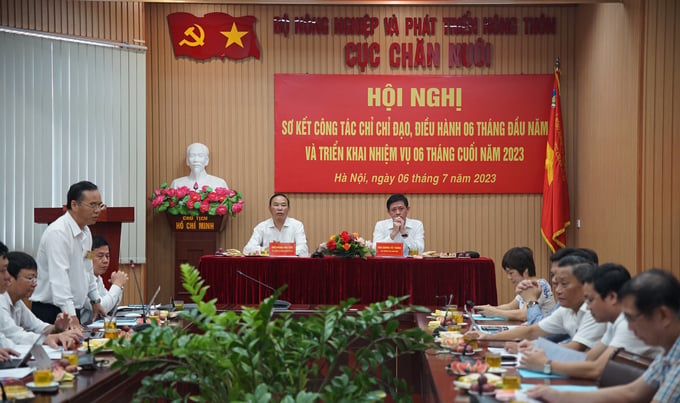
Deputy Minister Phung Duc Tien and Director of the Department of Livestock Production Duong Tat Thang chaired a conference to review the management of the first 6 months of the year and implement the tasks for the last 6 months of 2023. Photo: Linh Linh.
Mr. Tong Xuan Chinh, deputy director of the Department of Livestock Production, stated that 2023 will serve as a benchmark year for livestock production to expedite the implementation of the contents and objectives of the five-year plan for 2021-2025.
In the first six months of 2023, livestock and poultry production has developed steadily, but there are still many potential risks of disease outbreaks, as well as the risk of influenza virus strains and other diseases being imported from abroad; animal feed prices are still high, as is the situation of illegal import of livestock products; meanwhile, the prices of livestock products, especially live pork, have increased but remain low.
According to a report presented at the Conference on Livestock Production by the Department of Livestock Production, the buffalo herd was estimated to have decreased by 1.7%, and the production of live-weight buffalo flesh was over 61 thousand tons, a decrease of 0.9%. It is anticipated that the cattle population will increase by 0.9% over the same period in 2022, while beef production will increase by nearly 2.6% to more than 245,000 tons.
Milk production increased by 8.4% to roughly 663 million liters. In 2022, the pig population is anticipated to increase by 2.5% over the same period. The estimated total swine production for the first half of the year is over 2,300 thousand tons, up 6.5% from the same period last year. In 2022, it is anticipated that poultry will increase by 0.9% over the same period. In six months, the production of poultry flesh surpassed one million tons, an increase of 4.8%; the production of eggs increased by 4.2% during the same period.
In the first six months of 2023, the domestic production of mixed animal feed reached approximately 9,87 million tons (a decrease of approximately 1.5% compared to the same period in 2022).
Regarding the market, imports of feed ingredients in the first half of the year totaled 8.2 million tons (equivalent to 3.4 billion USD), a decrease of 3.3% in volume and 7.9% in value compared to the same period in the previous year. During the same period, the output value of livestock products increased by 26.6%, reaching 232 million USD in six months.
Assessing the state of the industry in the first half of 2023, Mr. Duong Tat Thang, Director of the Department of Livestock Production (Ministry of Agriculture and Rural Development), stated that the prices of all types of livestock and poultry have been falling for a considerable amount of time. Beginning in April of this year, the outlook for the livestock industry has improved, and the price of livestock has increased despite the instability of the global economy.
Mr. Thang suggested that relevant departments and agencies, such as the Department of Science, Technology and Environment, the National Center for Agricultural Extension, and the Department of Quality, Processing, and Market Development, etc., strengthen coordination to assist the livestock industry in achieving its goal of increasing production value by 3.5% to 4% compared to the previous year.
The Department evaluates the livestock production situation during the last six months of the year. Commenting on the situation of livestock in the last half of the year, the Department of Livestock Production determined that the disease was still complex and posed an outbreak risk; production costs, intermediaries, and domestic livestock product prices remained elevated.
In addition, there is the issue of market globalization, as well as our country's extensive integration with the rest of the world through 16 signed new-generation free trade agreements and 2 agreements that are still in negotiation. Which, the CPTTP and EVFTA regions are countries with greater livestock space than Vietnam, thereby increasing market pressure for domestic livestock products. In terms of American and European livestock products such as poultry and pork exported to the Vietnamese market, price, quality, and product variety are becoming increasingly competitive.
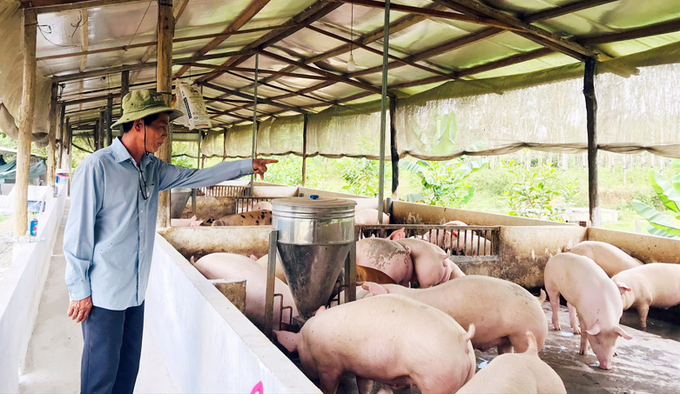
Pig prices have rebounded after a period of downward slide. Photo: TL.
In the second half of 2023, the Department of Livestock Production will focus on a number of crucial tasks, such as building and perfecting a system of legal documents, programs, and projects, of which there are 5 priority schemes for implementation of Strategy on livestock production for the period 2021 - 2030, with a vision to 2045; and directing the development of production and synchronization of biosafety breeding solutions, particularly on pigs and poultry.
The Department will concentrate on enhancing production capacity and quality control of breeding stock, as well as bolstering breed quality management inspections of localities, swine, and poultry breeders of great-grandparents and grandparents. On the premise of public services and digital transformation, continue to evaluate the livestock breed production system and implement the publication of applicable standards for breeding establishments on the system.
In addition, coordinate with the Department of Animal Health and related agencies in the prevention and control of diseases, particularly African swine fever, avian influenza, foot-and-mouth disease, and irregular skin disease.
Strengthen channels to closely monitor the supply and price of animal feed constituents in the country and around the globe, and take prompt action to minimize the impact on livestock production efficiency when input costs are high and feed quality is assured.
During the Conference, Deputy Minister Phung Duc Tien praised the livestock industry's performance in the first half of 2023, given the country's and the world's precarious circumstances.
The Deputy Minister instructed the Department of Livestock Production to closely monitor five priority projects to implement the livestock development strategy for 2021 to 2030, with a vision to 2045. These projects include: developing the livestock breed production industry; developing the animal feed processing industry; developing the barn industry and treating livestock waste; developing the slaughter, processing, and livestock product markets; and improving the quality of human resource management.
"These are projects that have been meticulously and scientifically constructed on the basis of the Strategy. They are the pillars for implementing the strategy on seed, seed industry, feed, environment, and breeding, processing, science, and technology, as well as long-term legal bases," the Deputy Minister stated.
Deputy Minister Phung Duc Tien instructed the Department of Livestock Production to focus on industry issues such as breeds, in addition to high-quality productivity, it is necessary to focus on developing indigenous livestock breeds; utilizing local raw materials for animal feed; strengthening international cooperation; agricultural extension and fundamental construction...
Translated by Dieu Linh
![Turning wind and rain into action: [6] ‘Four on-the-spot’ disaster management software](https://t.ex-cdn.com/nongnghiepmoitruong.vn/608w/files/news/2025/06/14/z6705183772518_8e6a71d5e2d464e10197411eb1d14b51-nongnghiep-192556.jpg)
(VAN) By simply activating the scenario on the disaster management software, the relevant authorities immediately know how many households need to be evacuated, where to evacuate them to, and by what means of transportation…
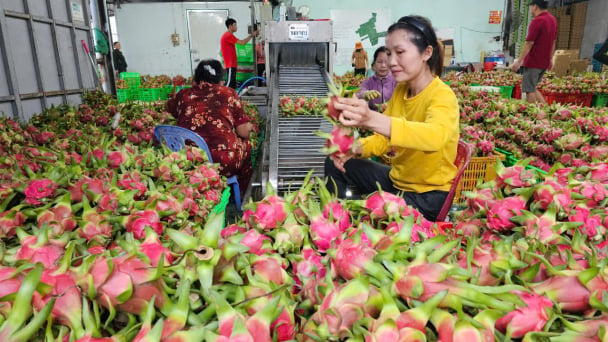
(VAN) According to the Binh Thuan Department of Industry and Trade, in the first five months of 2025, Binh Thuan's dragon fruit export turnover increased by 20.65% compared to the same period last year.
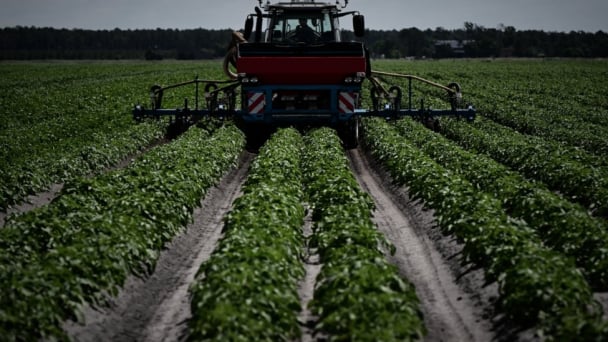
(VAN) EU countries on Thursday gave final approval to new tariffs on fertilizer imports from Russia, a move aimed at cutting off revenue that could support Moscow’s war in Ukraine, despite concerns from European farmers.

(VAN) The working delegation from the Ministry of Agriculture and Environment conducted an important trip to the Netherlands to strengthen strategic partnerships and sustainable development in the agricultural sector.
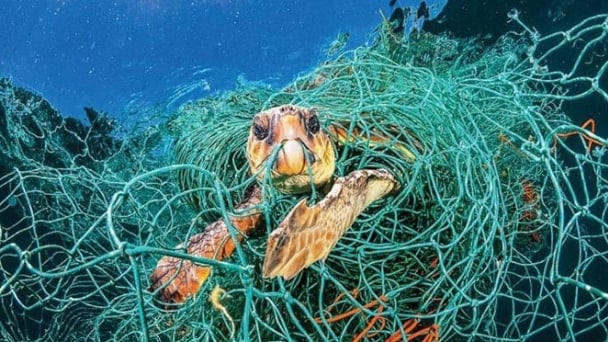
(VAN) The letter ‘A Plea from the Ocean’ not only evokes emotion but also awakens the human conscience to the responsibility of protecting life on Earth.

(VAN) The Department of Agriculture in South Africa has announced the country’s first mass vaccination of poultry to prevent local birds from contracting avian influenza.

(VAN) Establishment of the Mekong Delta Regional Agricultural Linkage Center, aiming for a closed value chain, deep processing, trading platforms, and international market connectivity.